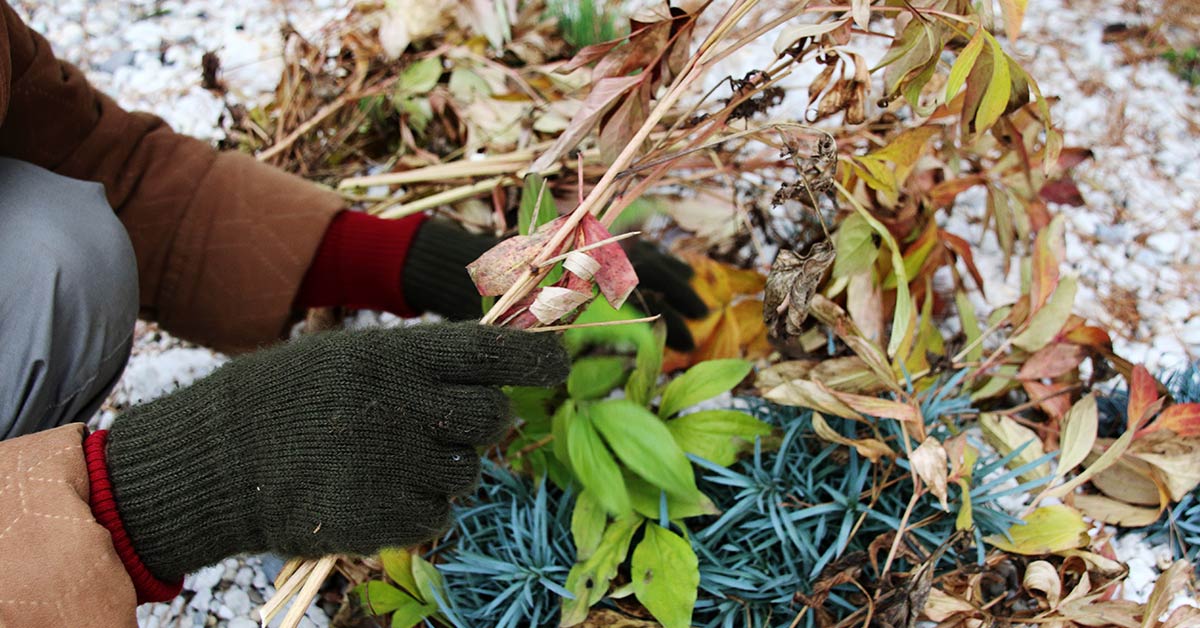In most places in the Northern Hemisphere, January is a time of cold weather, snowfall, fires in the fireplace, and some hot chocolate too. Your garden may not look like much now, but there’s some good stuff brewing under the soil. To get the most out of it, you’ll want to be sure you’re doing a few key things. There are the things gardeners should do in January
10 things gardeners should do in January
It may seem a little ridiculous to be working on your garden in January, but all gardens should be tended to every month of fall, winter, and spring in advance of the growing season to help you get the most out of it.
This is our suggested January gardening checklist.
Start planning
This one’s easy. You can do it from the comfort of your home, in your pajamas, with a hot cup of tea steaming in front of you. What do you plan to plant this year? What perennials are coming back? What annuals do you intend to grow? Where will you plant them? Start sketching out plans for your spring planting. It’s still a little bit too early to be starting most plants indoors, but consider ordering any seeds, bulbs, or starts you’ll need for your springtime garden now.
Check your fruit trees
Fruit trees fall dormant during the winter, and January is no exception. But some fruit tree problems can be identified and rectified this time of year. For example, fungal diseases may begin to present themselves in cherries and peaches. Do some research and find out what the fruit trees in your garden require during winter.
Tend to dry spots
This is one of the more important things gardeners should do in January. Some areas of your garden may be a bit dry compared to others. There’s a good amount of precipitation in the winter, but things planted under awnings or dense trees may not be getting as much water as other parts of your garden. Consider giving these sections of your garden a bit of extra water to make sure your dormant plants are getting the hydration they need.
Reapply mulch
Winter can be a tough time for your garden because of the inclement weather your region may experience. Some places get really windy, rainy, and snowy, which can blow your mulch around. Check the mulch around the plants and garden beds you’ve added mulch to. If it needs to be redistributed, or some more needs to be added, go ahead and do that now.
Monitor for landscape issues
During winter, many regions get a lot of snowfall that then melts, which is a process that may cause complications for your landscaping. That snowmelt may run off and cause damage to your landscaping. Go around your garden to make sure that your soil’s integrity is intact and no major damage has occurred. This can save you a ton of work and a huge headache later on, and your garden will be nice and ready come spring.
Refill bird feeders
Attracting wildlife to my garden is definitely my thing. I love birdwatching, so I have feeders placed all over my yard. If you haven’t looked at your bird feeders much since fall, you may want to take a few minutes to refill them all with high-quality bird feed. This will keep your pretty avian pals coming back all winter long.
Check and clean chicken coops
Winter can be tough on your chickens and their chicken coop. All the precipitation can cause damage, slowly but surely. Check your chicken coops for water damage and give them a thorough cleaning, especially if you do a deep litter method during the winter. It’s advisable to regularly clean chicken coops to help prevent the spread of disease and other health complications caused by their manure.
Thoroughly turn compost
If your compost heap isn’t frozen, give it a nice turning every January. Chop up any larger chunks of organic material that may be breaking down more slowly. You don’t need to turn your compost all that much over winter but a few turns here and there can help it break down. I also like to scoop extra snow off of sidewalks and throw it on my compost in order to help make sure it stays wet through winter.
Check on early perennials
There’s a good chance that your garden is all dead foliage and bare soil still but check around where some of your early perennials might be coming up. Crocuses can start to poke their heads up this early in some places. I know here in Oregon, springtime bulbs are usually starting to pop up during the first week of January. Make sure your perennials are coming in ok. If you need to move any around, now would be the time.
Clear any debris
One of the last things gardeners should do in January is look for any unwanted debris. Winter can blow in a lot of unwanted debris. It’s not a bad thing to leave things like leaves from your trees on your garden beds but check around your garden to make sure that there isn’t anything that may have blown in that you don’t want cluttering up your garden. This is also a good time to do any trimming or pruning for any plans that need to be trimmed during their dormant periods.













